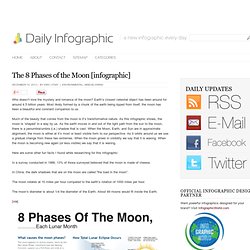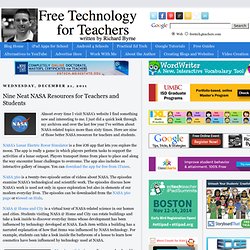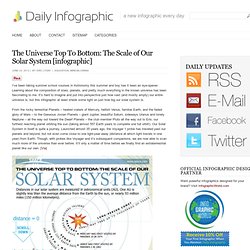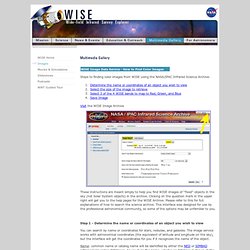

The 8 Phases of the Moon. Who doesn’t love the mystery and romance of the moon?

Earth’s closest celestial object has been around for around 4.5 billion years. Nine Neat NASA Resources for Teachers and Students. Almost every time I visit NASA's website I find something new and interesting to me.

I just did a quick look through my archives and over the last few year I've written about NASA-related topics more than sixty times. Here are nine of those better NASA resources for teachers and students. NASA's Lunar Electric Rover Simulator is a free iOS app that lets you explore the moon. The app is really a game in which players perform tasks to support the activities of a lunar outpost. Players transport items from place to place and along the way encounter lunar challenges to overcome. NASA 360 is a twenty-two episode series of videos about NASA. NASA @ Home and City is a virtual tour of NASA-related science in our homes and cities.
Moonbase Alpha is an online game developed by NASA to be played on the Steam online gaming platform. NASA Space Place is a sizable collection of fun projects, games, animations, and lessons about Earth, space, and technology. March to the Moon Image Gallery. Spacehack. 786 Known Planets to Scale. Guess what!

The sun doesn’t revolve around us, we actually revolve around it. And there are millions of other suns with rocks orbiting them. There are an astronomical number of planets in the universe; we are just one of those. All of these planets have completely different atmospheres, and physical make-ups. Do you know what it is like to live on Venus? Well, now that you’re are sweating your face off and lying on the ground because that is the only thing you can do in the current state of your surroundings, a little refreshing rain starts to fall. The Best Sites For Learning About Voyager 1 & Its Departure From Our Solar System. A Wet Towel In Space Is Not Like A Wet Towel On Earth : Krulwich Wonders... You just don't know (because who's going to tell you?)

That when you leave Earth, travel outside its gravitational reach, hundreds and hundreds of everyday things — stuff you've never had to think about — will change. Like ... oh, how about a wet washcloth? Two high school students in Nova Scotia, Kendra Lemke and Meredith Faulkner, asked Canadian astronaut Chris Hadfield (who is orbiting the planet right now) what it would be like to dip a washcloth in water (they suggested he clump it into a bottle, then pull it out) and squeeze it.
On Earth, a really wet washcloth, squeezed tight, will drip, right? Up on the International Space Station, wet washcloths don't drip. (As a radio guy, I was SO aware of Chris's floating microphone. ... Thanks to Jason Kottke and his blog for noticing this. The Scale of the Universe. Astronomy Picture of the Day. Discover the cosmos!

Each day a different image or photograph of our fascinating universe is featured, along with a brief explanation written by a professional astronomer. 2016 April 15 Mercury and Crescent Moon Set Image Credit & Copyright: Miguel Claro (TWAN, Dark Sky Alqueva) Explanation: Innermost planet Mercury and a thin crescent Moon are never found far from the Sun in planet Earth's skies. Taken near dusk on April 8, this colorful evening skyscape shows them both setting toward the western horizon just after the Sun. Tomorrow's picture: Heliopause Electrostatic Rapid Transit System Authors & editors: Robert Nemiroff (MTU) & Jerry Bonnell (UMCP)NASA Official: Phillip Newman Specific rights apply.NASA Web Privacy Policy and Important NoticesA service of:ASD at NASA / GSFC& Michigan Tech.
Comets. EarthKAM. Home and City. Mars. Mars exploration since 1964, from first flyby to Curiosity - interactive. The Space Race: Nasa, the Apollo missions. Www.dmns.org/media/9178/Black_Holes_online_guide.pdf. Wildest Weather in the Solar System Education. The Universe Top To Bottom: The Scale of Our Solar System. I’ve been taking summer school courses in Astronomy this summer and boy has it been an eye-opener.

Learning about the composition of stars, planets, and pretty much everything in the known universe has been fascinating to me. It’s hard to imagine and put into perspective just how vast (and mostly empty) our entire universe is, but this infographic at least sheds some light on just how big our solar system is. From the rocky terrestrial Planets – heated craters of Mercury, hellish Venus, familiar Earth, and the faded glory of Mars – to the Gaseous Jovian Planets – giant Jupiter, beautiful Saturn, sideways Uranus and lonely Neptune – all the way out toward the Dwarf Planets – the club member Pluto all the way out to Eris, our furthest reaching planet orbiting the sun (taking almost 557 Earth years to complete one full orbit!).
Our Solar System in itself is quite a journey. Share This Infographic. Windows to the Universe. Multimedia Gallery: WISE Image Data Service. Steps to finding color images from WISE using the NASA/IPAC Infrared Science Archive: Visit the WISE Image Archive These instructions are meant simply to help you find WISE images of “fixed” objects in the sky (not Solar System objects) in the archive.

Current position of the ISS. Com feature.